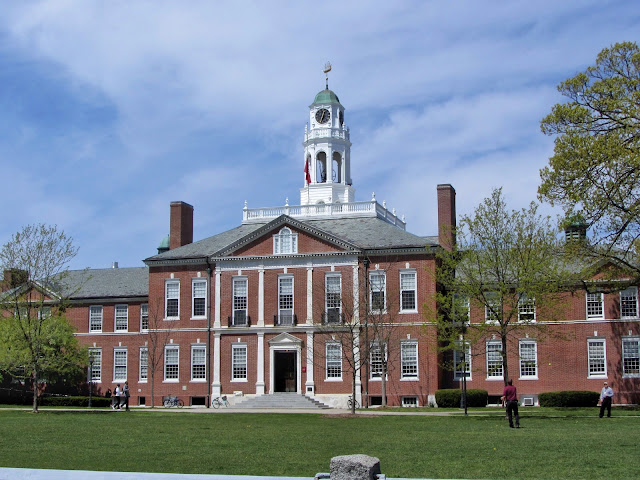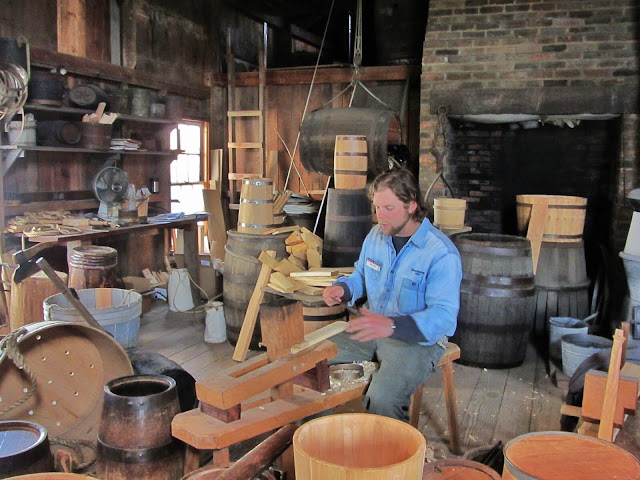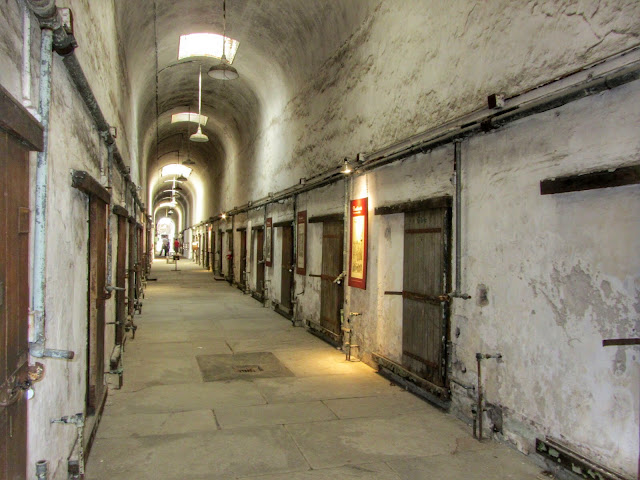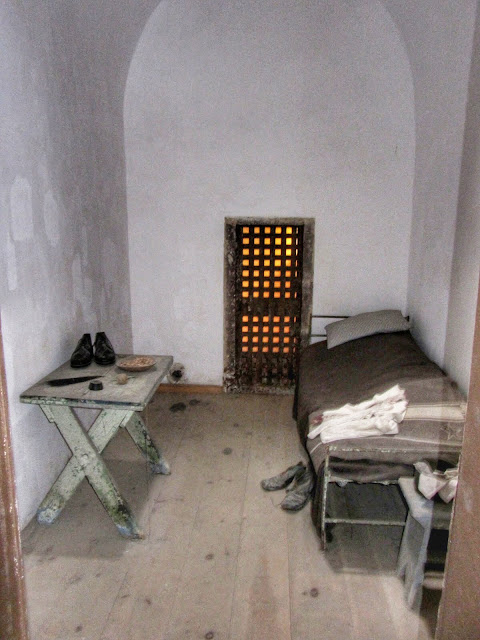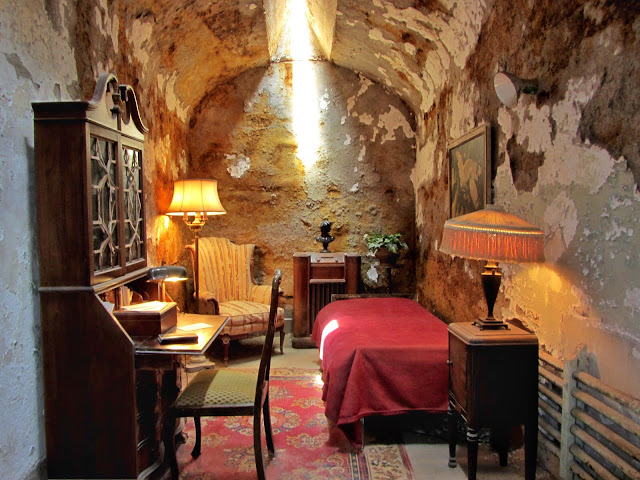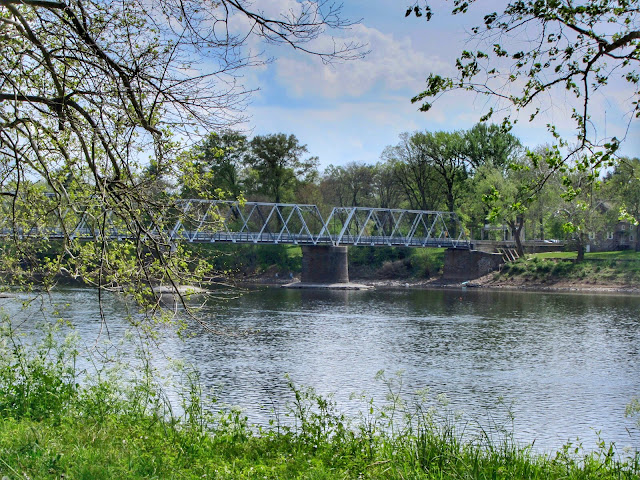Nightmare in Manchester
space
After lunch, we hit the road for Manchester, where we would overnight, visit a few historic places and find some letterboxes before heading west to Vermont. On the way to Manchester, we stopped near Nottingham at Pawtuckaway State Park, where we hoped to find a spot to plant our New Hampshire letterbox.
space
space
For a change, we arrived at our hotel a little earlier than usual, checking in around 3:00. I settled into the room and pulled out the computer to catch up on some letterbox clue writing and blogging while Ken headed out to run some errands. Since we were at a hotel that provided an evening meal with the cost of the room, we didn't even need to worry about finding a place for dinner. All we had to do was go downstairs.
space
So after Ken returned, rested for a while, and watched a bit of news, we headed downstairs for the buffet. Happy to be finished with our evening meal and back in the room for the night around 6:15, Ken went back to watching news in the bedroom while I let my computer know it was time to get back to work in the living room.
space
As I was waiting for the Sony to boot, I heard an electronic key inserted in the door of our room. Figuring another guest had stopped at the wrong door, I looked out the peephole, ready to open the door and explain their error. To my surprise, I saw instead three police officers in the hall.
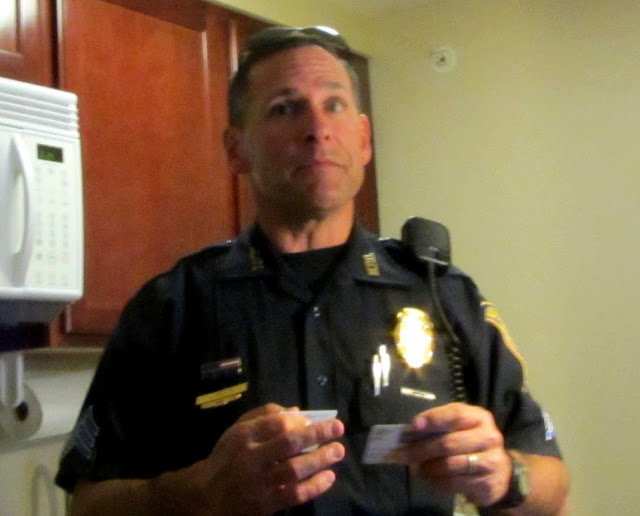 |
| Manchester Officer |
"Of course," I replied. "Why didn't you just knock on the door? Why were you trying to enter our room with a key?"
(Fortunately we were both fully dressed, not always the situation when we're in our hotel room for the night. One of us could have easily been bathing at that hour.)
The sergeant explained that they were concerned about their own personal safety and didn't know whether we might pose a danger to them if they knocked. That certainly threw me for a loop. They'd have a very difficult time finding anyone less of a threat than us. But obviously, the local police didn't know that. Nor had they been schooled in the legal requirements of no-knock entries.
In our research on the matter since this incident occurred, it appears that generally, courts have ruled that no-knock entries require a "no-knock" search warrant issued by a judge. Courts reserve these warrants for situations in which a building's owner or occupier could destroy the sought-after evidence by the time law enforcement waits for the owner or occupier to open the door.
No warrant— knock or no-knock—was involved in this matter. In our estimation, their attempt to enter our room without notice was a blatant violation of our rights—but only the first one.
As soon as they entered the room, Ken came into the living room, and Manchester's Finest began questioning both of us regarding where we had been, what we had been doing since we arrived at the hotel. Immediately we asked why they wanted to know. We were completely mystified about why any of our activities would be of interest to law enforcement.
And as far as we knew, New Hampshire was still part of the United States of America and we had not entered a realm where our rights to privacy as U.S. citizens no longer applied.
"We're not at liberty to divulge that information," the sergeant replied and continued asking questions. Since we had nothing to hide, we answered their questions as best we could. After all, we had not kept a minute-by-minute log of our afternoon activities. I told them I had been in the room working on our blog, and Ken said he had been running errands. When Ken mentioned that he had receipts for the shopping he had done in the afternoon, they wanted to examine those and did.
Over and over, we asked why they were questioning us. What was the concern? Had we been accused of something? If so, what were we accused of?
Totally ignoring our Sixth Amendment rights to be informed of the nature of the accusation against us, they refused to answer, no matter how many different ways we framed the question.
Finally, Sarge had an inspiration and asked if he could take our photo. Since I had already taken a couple of pictures of the officers**, it seemed a fair trade. He took our pictures on his cell phone and excused himself from the room, leaving Officer 1 and Officer 2 to guard over us in his absence.
Still in shock, we continued trying to convince the officers of the absurdity of us as suspects while we waited to see what would happen next. Finally the Sarge contacted them on the radio and apparently told them that the investigation of the innocent Georgia couple was over. Officer 1 and Officer 2 made their parting remarks and left, refusing one last time to answer our questions regarding what all this was about.
Totally dumbfounded, we asked each other what had just happened. We still had absolutely no clue whatsoever why the local gendarmes had invaded the privacy of our hotel room and pelted us with questions for half an hour.
Maybe an answer lay with the management of the hotel. We went downstairs and asked to speak with the manager on duty. A congenial young woman, she could not have been more apologetic. And she finally gave us some answers.
A guest at the hotel had reported that her eight-year-old child claimed that she had been taken into a hotel room against her will. And the child kept insisting it was room 406, the room where we were staying. When the officer showed our photos to the child, she apparently told him that we were not the guilty parties.
Whether anyone did detain the child or she later recanted her statement, we never knew. Nor did we learn what allegedly occurred while the child was in the room. What we did know is that we were ready to leave Manchester and the entire state of New Hampshire as soon as the sun rose. Forget any historical sites, forget any letterboxes.
The entire incident was so far outside anything we had ever experienced that we never really comprehended the possible impact until later. In fact, we both woke during the night pondering what might have occurred if the child had falsely accused us when she was shown our photos. Neither of us had forgotten the reminder we had in Salem, MA, a few days ago about the potential outcome of unsubstantiated false accusations.
But what happened in Salem couldn't be repeated in 2012, right? Our efforts to reassure ourselves of that fell flat in light of our experience with the Manchester police.
And we thought Greenville, South Carolina was bad.
____________________________
**During the time the officers were questioning us, I picked up my camera and took a photo of them.
"Did you just take a picture of me?" the sergeant asked.
"Yes," I replied.
"That's going to be on your blog, isn't it?" he asked.
"Yes," I replied.
And it is.


